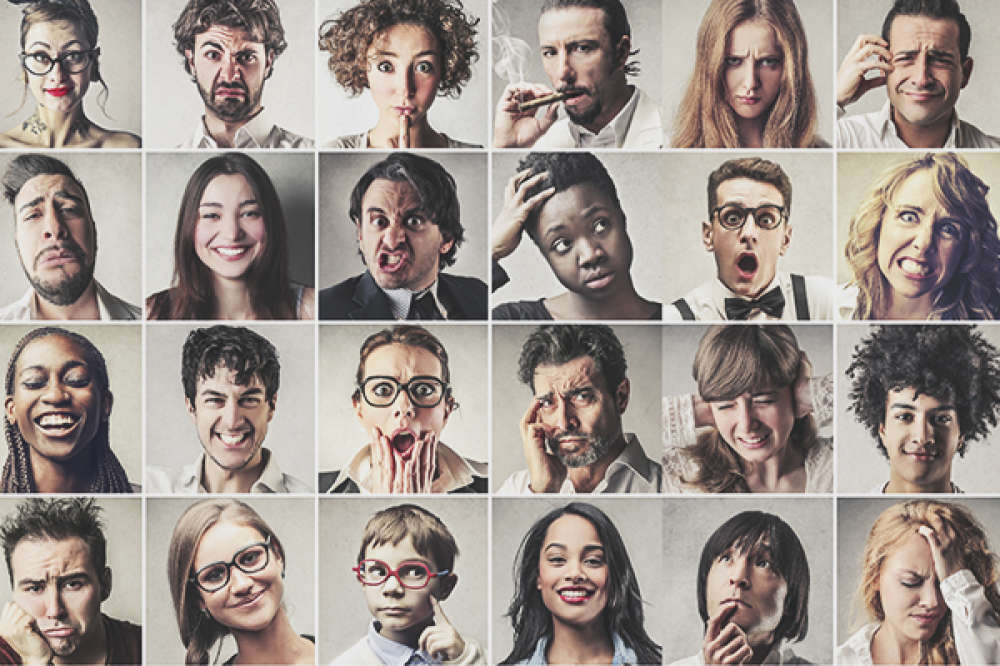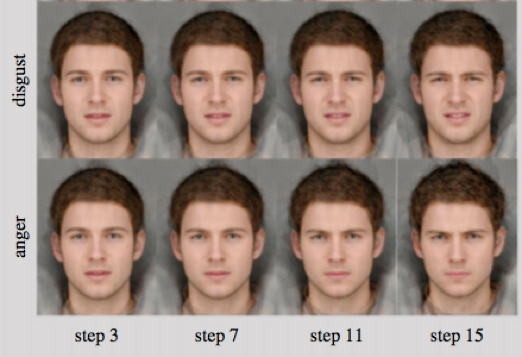It may not seem entirely obvious, but being able to understand facial expressions is one of the most basic forms of communication that we have as humans. These expressions allow us to infer thoughts, intentions, and emotional states of others that can influence how we act around them1,2. You may say “hello” to a fellow coworker but infer from their facial expressions that they have had a rough day; this may make you more sympathetic when interacting with them.
While this is information that many of us innately perceive and react to, we do not all get the same information from the same emotional expressions. Scientific studies have looked at how individuals with autism spectrum disorder3, childhood antisocial behaviors4, schizophrenia5, and other extreme social disorders affect how they perceive emotions. The failure to properly recognize and categorize emotions (i.e., recognize a smile as happy) is believed to be a root cause of many behaviors associated with these social disorders. When we discuss people not reading emotional facial expressions, we tend to assume that one of these social disorders is at work — most likely autism spectrum disorder. However, anxiety, anxiety disorders, and other mood disorders such as major depression also influence how we read emotional faces6,7. Specifically, people who have high levels of anxiety or depression often categorize faces as fearful or angry.
The Science Behind Emotional Face Processing
Studies of emotional face processing often use a version of a forced-choice task: Participants are presented with a face on the screen and asked to categorize the emotion. Common facial expressions tested are fear, happiness, sadness, surprise, disgust, and anger. For each one, the face is digitally manipulated to show levels of the emotion. Through several trials scientists can determine how sensitive a person is to certain emotions. The picture below (reproduced under Creative Commons license) shows such examples for disgust and anger8.
The step number at the bottom (3, 7, 11, 15) identified is the sensitivity to that emotion. When an emotion is incorrectly identified, it is considered miscategorization. Scientists use this information to determine emotional face recognition. Then they will examine whether personality traits can explain differences or stress the body more in some way (for example, by reducing the oxygen in the air). This method is shown to be a reliable way to measure emotional processing. (Its main limitation is that there’s no known facial movement that also provides information. Despite this, a study of this type can be reliably replicated, meaning that several scientists will show the same results.)
Scientific Results and What They Reveal
Many studies have shown that adults with clinically diagnosable anxiety generally have worse emotional recognition6. If we look at specific types of anxiety, we see some differences in how emotional faces are interpreted. People with social anxiety disorder are more sensitive to anger and disgust. Also, they are more likely to falsely attribute another emotion; for example, that a surprise face shows anger or disgust11,12,13. Even in healthy adults without clinically diagnosable anxiety, studies have shown that those who rate anxiety more highly on a personality test were more sensitive to fearful faces9,10.
These studies have changed how some psychologists and other scientists think about anxiety disorders. As researchers further study this relationship between anxiety and emotional recognition, they view the misinterpretation of emotion less as a symptom of anxiety and more of an initiating cause14.
This suggests that when a person becomes more sensitive to emotions such as anger, fear, or disgust, they’re also more likely to attribute different expressions to them, which may cause greater anxiety. Think of it as accidentally spilling a drink on the floor at a party. In reality people are being kind and trying to help you, but you may misidentify their facial expressions and think they are angry. This makes you more anxious and less likely to go to a party in the future, negatively feeding into your social anxieties.
What This Means for Anxiety Treatment
Modern anxiety treatment techniques focus on breaking this cycle. They teach people to have more conscious awareness of negative thoughts and to form a habit of reframing them positively.
The studies of emotional face processing help us understand another piece in the negative cycle of anxiety. The findings suggest that a very fundamental negative thought in those who have anxiety disorders is perceiving anger, fear, or disgust in others even when those emotions are not present. Nobody can fully understand another person’s state of mind, but those with anxiety disorders may automatically assume the worst. Armed with this knowledge, it’s important to be more mindful of how anxiety affects the recognition of emotions and help curb negative perceptions and behaviors.
Sources
1. Horstmann, G. (2003). What do facial expressions convey: feeling states, behavioral intentions, or action requests? Emotion. 3, 150–166.
2. Seidel, E.M., Habel, U., Kirschner, M., et al. (2010). The impact of facial emotional expressions on behavioral tendencies in women and men. Journal of Experimental Psychology: Human Perception and Performance. 36, 500-507.
3. Corbett, B.A., Newsom, C., Key, A.P., et al. (2014). Examining the relationship between face processing and social interaction behavior in children with and without autism spectrum disorder. Journal of Neurodevelopmental Disorders. 6(35).
4. Bowen, E., & Dixon, L. (2010). Concurrent and prospective associations between facial affect recognition accuracy and childhood antisocial behavior. Aggressive Behavior. 36, 305–314.
5. Marwick, K., & Hall, J. (2008). Social cognition in schizophrenia: a review of face processing. British Medical Bulletin. 88, 43–58.
6. Demenescu, L.R., Kortekaas, R., den Boer, J.A., & Aleman, A. (2010). Impaired attribution of emotion to facial expressions in anxiety and major depression. PLoS ONE. 5, e15058.
7. Fox, E. (2002). Processing emotional facial expressions: the role of anxiety and awareness. Cognitive, Affective, and Behavioral Neuroscience. 2, 52–63.
8. Attwood, A.S., Easey, K.E., Dalili, M.N., et al. (2017). State anxiety and emotional face recognition in healthy volunteers. Royal Society Open Science. 4, DOI: 10.1098/rsos.160855.
9. Doty, T.J., Japee, S., Ingvar, M., Ungerleider, L.G. (2013). Fearful face detection sensitivity in healthy adults correlates with anxiety-related traits. Emotion. 13, 183–188.
10. Surcinelli, P., Codispoti, M., Montebarocci, O., Rossi, N., & Baldaro, B. (2006). Facial emotion recognition in trait anxiety. Journal of Anxiety Disorders. 20, 110–117.
11. Mohlman, J., Carmin, C.N., & Price, R.B. (2007). Jumping to interpretations: social anxiety disorder and the identification of emotional facial expressions. Behaviour Research and Therapy. 45, 591–599.
12. Kessler, H., Roth, J., von Wietersheim, J., Deighton, R.M., & Traue, H.C. (2007). Emotion recognition patterns in patients with panic disorder. Depression and Anxiety. 24, 223–226.
13. Heuer, K., Lange, W.G., Isaac, L., Rinck, M., & Becker, E.S. (2010). Morphed emotional faces: emotion detection and misinterpretation in social anxiety. Journal of Behavior Therapy and Experimental Psychiatry. 41, 418–425.
14. Harmer, C.J., Goodwin, G.M., & Cowen, P.J. (2009). Why do antidepressants take so long to work? A cognitive neuropsychological model of antidepressant drug action. The British Journal of Psychiatry. 195, 102–108.
Arick Wang is a doctoral student at Emory University, studying neuroscience and animal behavior. He received his Bachelor of Science in Neuroscience and Behavioral Biology from Emory University in 2012 and his master’s in psychology from Emory in 2015. Working with Dr. Jocelyne Bachevalier, Arick studies the development of early social behavior in infant rhesus macaques (macaca mulatta), specifically trying to link brain development to the acquisition of early social skills with relation to Autism Spectrum Disorder. His research is conducted at the Yerkes National Primate Research Center in collaboration with the Marcus Autism Center.




